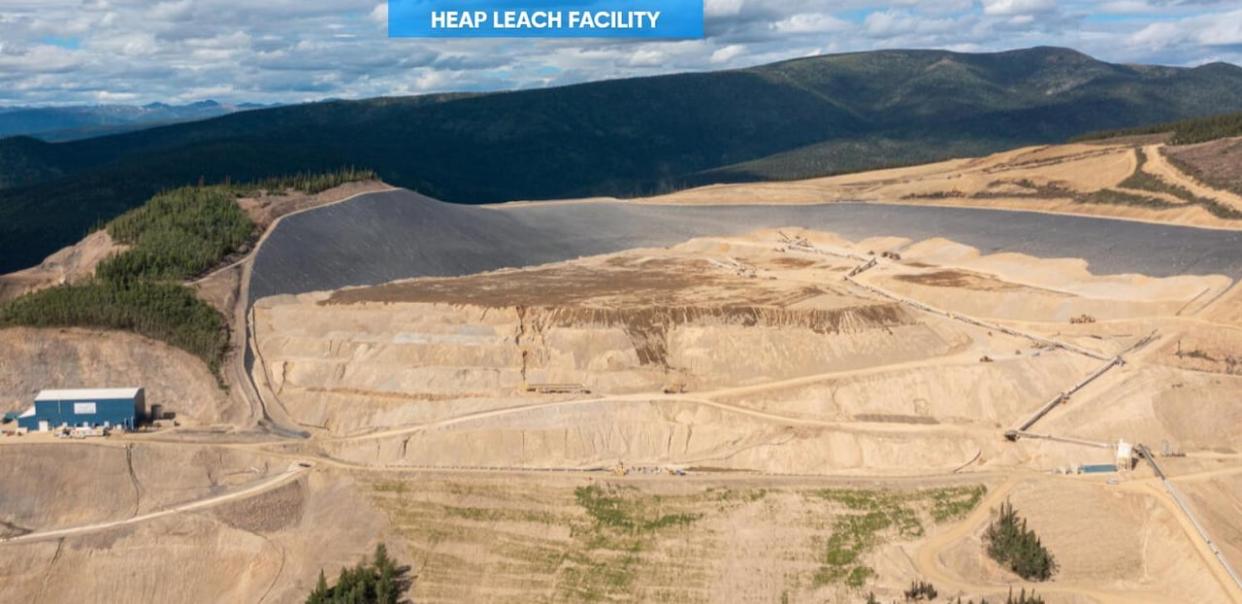Yukon gov't orders Victoria Gold to provide plans aimed at treating, monitoring contaminated water

The Yukon government has given Victoria Gold marching orders to deal with toxic chemicals in and around its Eagle mine, following last month's major failure of a heap leach pad at the site.
A new report written by a government inspector states there's "reasonable grounds" to believe the company has violated laws that govern water use.
"During the [June 25] inspection it was observed that sloughed heap material had flowed downstream throughout the Dublin Gulch valley beyond containment structures," states the report, which adds a subsequent slide could make matters worse.
"The stability of the sloughed materials as well as the materials that remain in the heap leach pad remains uncertain and poses a significant risk to persons on site and the surrounding environment."
The failure at the mine site last month saw a landslide rip off part of the mine's heap leach pad, used to process ore and extract gold. The damage, which has hobbled operations since, caused cyanide, metals and other contaminants to spill into the environment.
The July 5 report states Victoria Gold must address that risk, namely by submitting plans to install groundwater interception systems in Dublin Gulch between the bottom of the slide and a nearby dam, and storing the water crews collect.
Last week, Yukon's Mines Minister John Streicker told reporters the water test results of nearby creeks show a "low" concentration of cyanide. One reading — at Dublin Gulch — showed a level high enough to affect fish. And testing from the mine site itself showed 8.58 milligrams per litre of cyanide at the bottom of the slide.
The report from the inspector also calls on Victoria Gold to stabilize the slide below the heap leach pad and expand monitoring efforts of surface and groundwater to happen at least daily.
The inspector also directs the company to submit plans to treat affected water. That includes coming up with daily treatment volumes.
The inspector gave the company a deadline of this week to submit plans.
A government spokesperson said the Department of Energy, Mines and Resources has received the plans from the company. The department didn't provide the plans when asked by CBC News.
No one with the department was available for comment.
'War-like' effort to contain cyanide spill
Randi Newton, conservation manager at the Yukon chapter of the Canadian Parks and Wilderness Society, said there should be a "war-like" effort to contain cyanide, and that plans will take time to execute. All the while, Newton said, the environment is suffering.
"To treat it, to make sure fish are OK, to make sure people are OK and water is OK," she said, adding that the company's heap leach facility emergency response plan is cursory, at best.
"It's very high level. Basically, stop applying cyanide solution, pump contaminated water and remediate what you couldn't stop from contaminating the land."
Newton wants the territory to take things a step further and provide deadlines for the company to implement its mitigation measures.
"The only time I can give is as soon as possible," she said.
"Knowing that people actually do live along these water bodies, it would be nice to see a company order to provide a reliable, safe source of drinking water to these families until it can be shown that the water is actually safe to drink."


